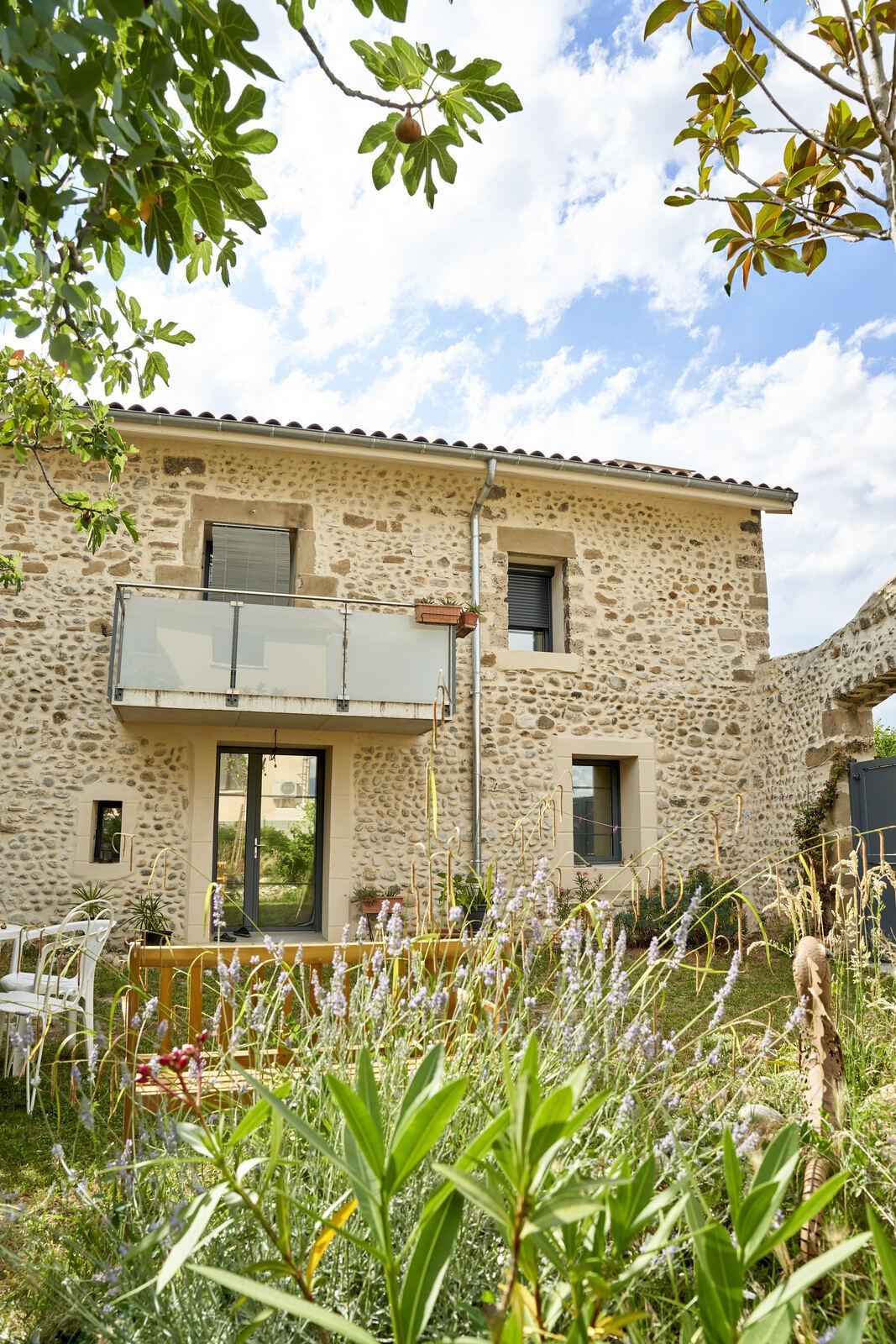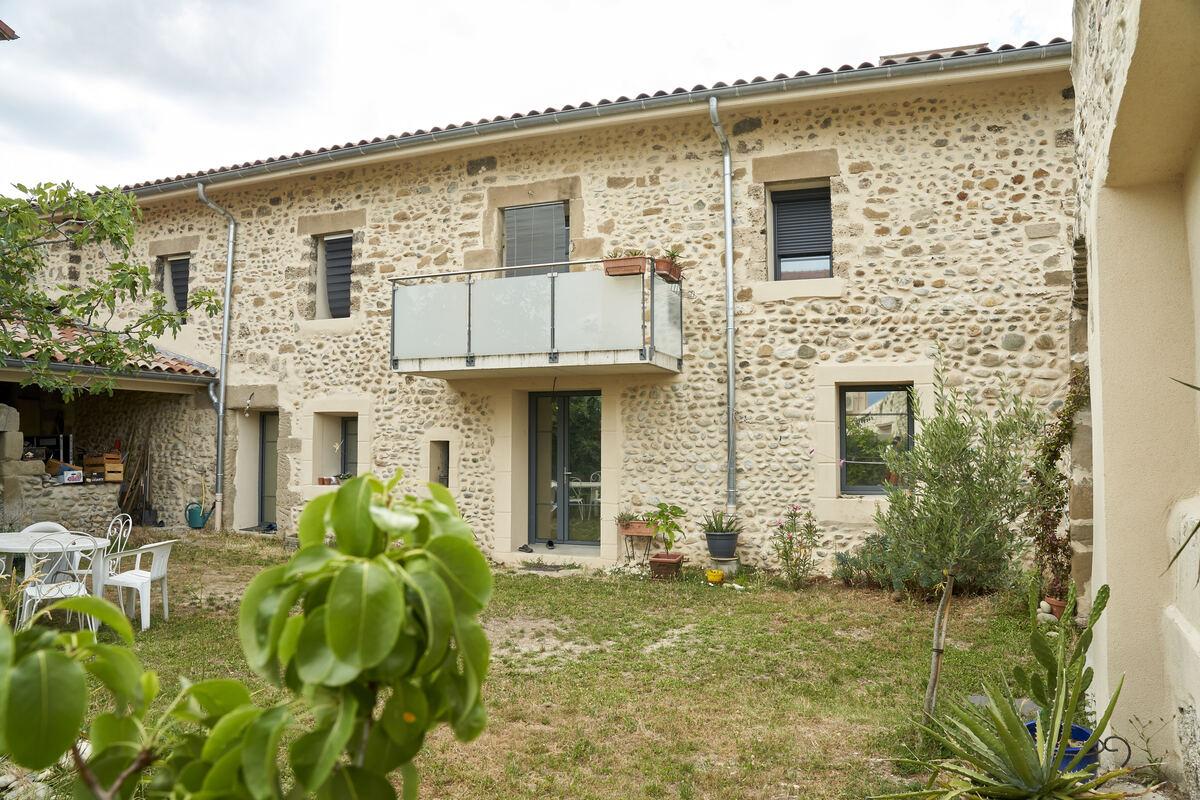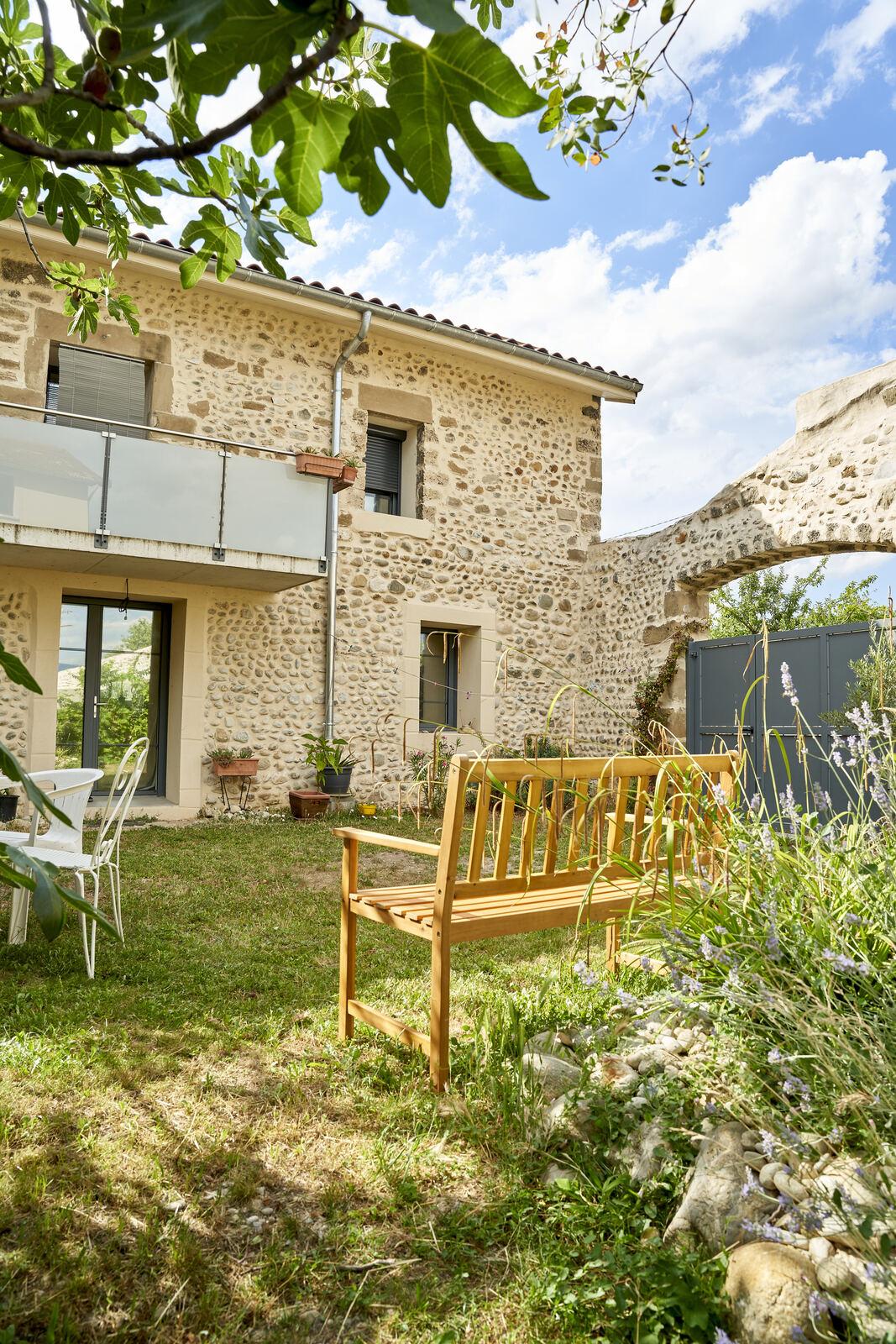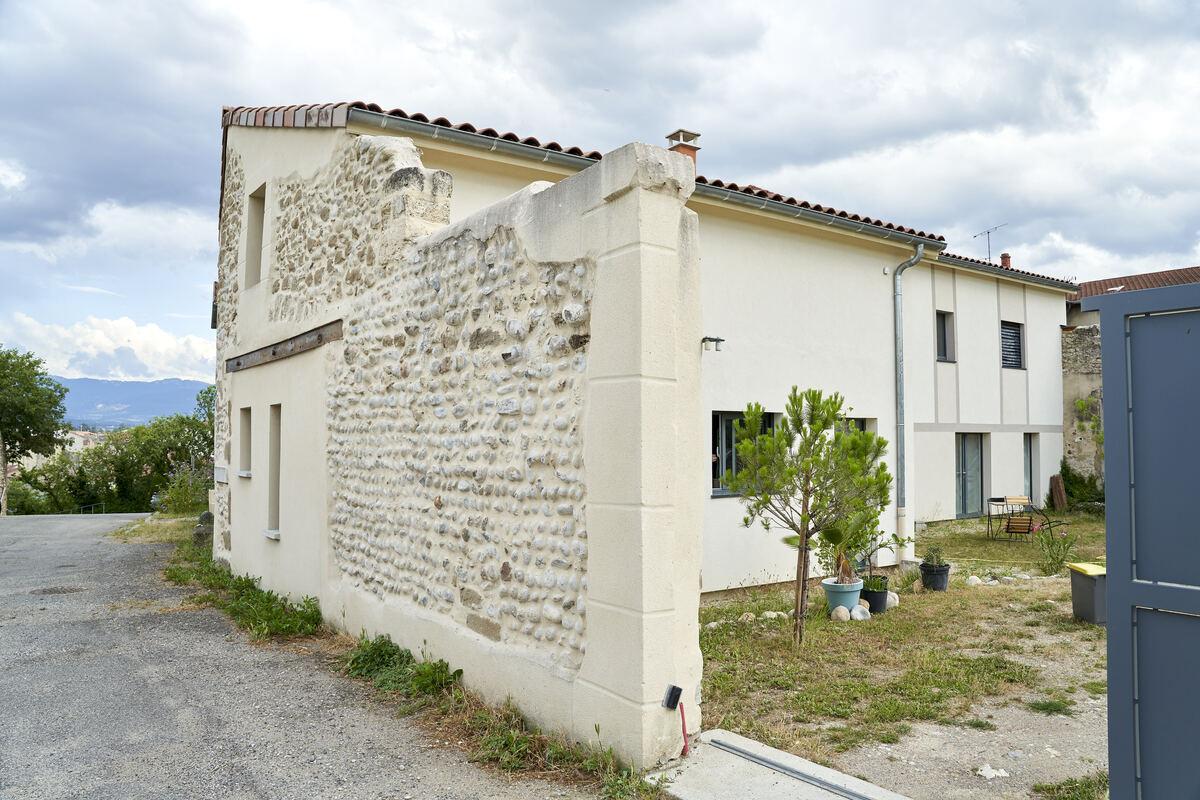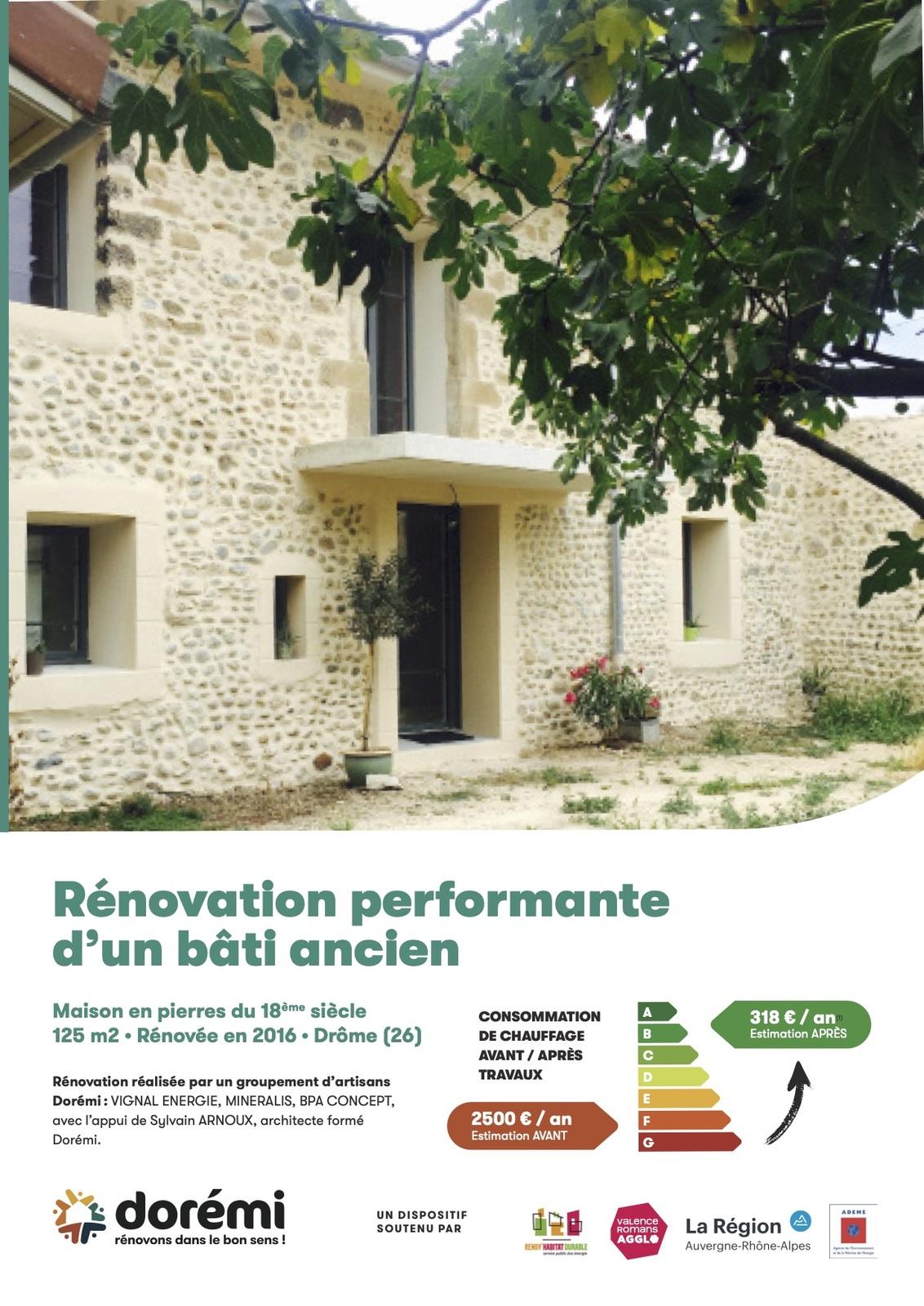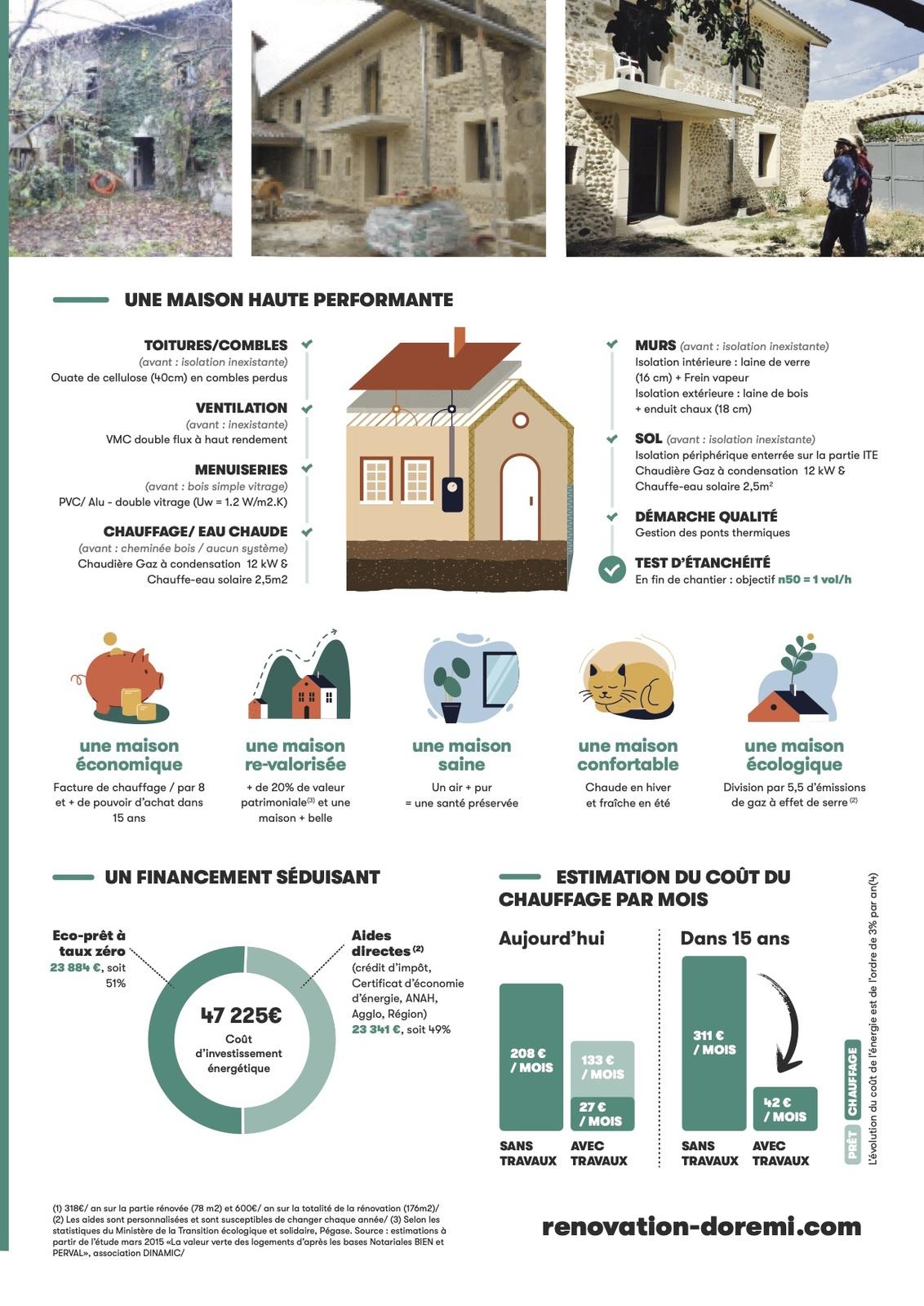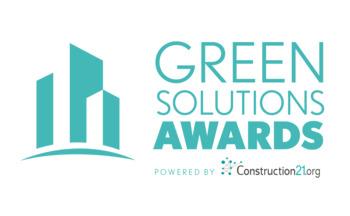Efficient and accessible renovation of an old house
Last modified by the author on 02/09/2020 - 11:32
Renovation
- Building Type : Isolated or semi-detached house
- Construction Year : 1700
- Delivery year : 2016
- Address 1 - street : x 26100 ROMANS-SUR-ISèRE, France
- Climate zone : [Cfb] Marine Mild Winter, warm summer, no dry season.
- Net Floor Area : 126 m2
- Construction/refurbishment cost : 47 225 €
- Number of Dwelling : 1 Dwelling
- Cost/m2 : 374.8 €/m2
-
Primary energy need
50 kWhep/m2.an
(Calculation method : Other )
This case study concerns a project for the acquisition / rehabilitation of a house dating from the 18th century where the owners are eligible for ANAH (modest or very modest household). In order to achieve a complete and efficient renovation, the group of craftsmen based themselves on the "Dorémi Renovation" standard which specifies the technical requirements of means in order to achieve an average heating consumption of 50KWhep / m2shab.an, in particular by managing thermal bridges, vapor migration and airtightness. Here is the work done on this stone house:
- roof insulation,
- interior insulation with glass wool and vapor brake
- exterior insulation in wood wool and lime plaster,
- peripheral insulation buried in the continuity of the ITE,
- installation of a high efficiency double flow CMV,
- double glazing PVC and ALU;
- condensing gas boiler,
- solar water heater for the domestic hot water system.
In order to finalize the renovation, an airtightness test was carried out, the objective of test n50 was reached (1vol / h). The main innovation of the device is to bring out a new economic model for efficient renovation: control of work costs and performance (division by 4 to 8 of heating consumption) makes it possible to transform heating bills into monthly loan installments. '' an equivalent amount, based on existing financial mechanisms (zero rate eco-loan, EEC, etc.).
The energy investment cost for this renovation is 47,225 euros with 49% direct aid (CITE, EEC, ANAH, Agglo, Region) and 51% eco-loan at zero rate. After work, the owners reduced their heating consumption by around 85% (division by 7).
Dorémi's mission is to make complete and efficient renovation accessible to everyone. 10% of the total consumption of French energy is swallowed up by the heating of houses built before 1975, also says the energy strainers. After various field returns, the renovation in stages of work does not allow to achieve a sufficient level of energy performance. Also, Dorémi is betting on a complete and efficient renovation, that is to say the renovation of the entire house in a single stage of work: insulation of the roof or attics, walls, high floors and low, installation of joinery, ventilation and an efficient heating system. Dorémi trains and supports local players (trainer, communities) in the deployment of High-Performance Renovation. Dorémi trains craftsmen on site to work in groups to carry out High Performance Renovation projects. Finally, in partnership with local authorities, Dorémi supports individuals to facilitate their renovation journey. The efficient renovation of this old building is just one example of Dorémi's work.
Sustainable development approach of the project owner
The Dorémi approach shared by the client consists of proposing a viable ecological and economic response to accelerate the efficient renovation of buildings at a given time. The choice of materials is therefore always made by trying to limit their carbon footprint as much as possible, within a given budget. This renovation project, aimed at reducing heating consumption, reduces fossil fuel consumption and associated GHG emissions by around 85%. Renovating an old building to BBC level is less emitting than new construction of an equivalent building.Architectural description
-Photo credit
Juan Robert
Contractor
Construction Manager
Stakeholders
Company
VIGNAL ENERGIE
Craftsman group formed by Dorémi
Company
MINERALIS
Craftsman group formed by Dorémi
Company
BPA Concept
Craftsman group formed by Dorémi
Designer
Sylvain Arnoux
Dorémi trained architect who worked on the non-energy structural work
Energy consumption
- 50,00 kWhep/m2.an
- 390,00 kWhep/m2.an
More information
Dorémi renovations are based on technical renovation solutions making it possible to achieve a heating consumption of 50kWhEP / m²shab.year on the average of the stock of single-family houses in France. From more than 6,000 dynamic simulations (using TRNSYS software) on a panel of housing buildings representative of the old stock, a large number of technical configurations could be tested by varying the additional thermal resistances implemented (it is necessary to acts of additional resistance and not of the resistance of the wall once insulated), the nature of the ventilation systems, the quality of the airtightness, the nature of the insulation (interior or exterior), the climatic zone , etc. The simulations were carried out on four buildings comprising individual houses and small collective buildings. The results can therefore be applied equally to both. This set of simulations, carried out in 2009, enabled the emergence of specific work packages which, implemented in all renovations from today, will make it possible to achieve the objective of “50 kWh / m² / year ”. For a country to consume 50kWh / m² / year (heating only) after renovation, there are two ways of doing things: either each dwelling must imperatively consume 50kWh / m² / year, which is practically impossible. Either way, not all homes have the same consumption, but on average national consumption is 50kWh / m² / year. It is this second option on which the method is based.
Systems
- Condensing gas boiler
- Solar Thermal
- No cooling system
- Double flow heat exchanger
- Solar Thermal
Urban environment
Product
VMC Double flow
Brink
https://www.brinkclimatesystems.fr/Management / Others
We spend over 80% of our time indoors and the air there is 10 times more polluted than outdoors. The regulations require strengthening the waterproofing, insulation of housing and air renewal.
The double-flow VMC is equipped with two fans, it is a network of ducts and outlets, one will extract the stale air from the wet rooms and the other will breathe new filtered air into the rooms of the accommodation. The advantages of double flow CMV are multiple:
- Energy savings (up to 70% or 90% recovered)
- Thermal comfort: there is a heat exchanger which recovers the heat from the extracted air to transmit it to the outside fresh air.
- Acoustic comfort: elimination of air inlets above the windows that let in outside noise and cause the sensations of drafts
- Improved air quality: the incoming new air is filtered, this minimizes the risk of allergy, control of air renewal room by room.
- Summer comfort: if the double-flow CMV is equipped with an automatic by-pass, the incoming new air no longer passes through the exchanger and is diffused directly into the accommodation, making it possible to take advantage of the cool nights in summer .
After work, individuals are satisfied to have implemented a double flow CMV. It is sometimes necessary to deconstruct certain preconceptions (too expensive, noisy, etc.)
Reasons for participating in the competition(s)
Une rénovation énergétique performante selon le dispositif Dorémi permet des bénéfices immédiats après rénovation :
- Une maison économique avec une division en moyenne de 4 à 8 des consommations de chauffage,
- Une valorisation patrimoniale plus importante après une rénovation : selon l'étude DINAMIC (chambre des notaires) il y a un gain, en général, de 5% de valeur par classe DPE.
- Une maison plus saine passant par une meilleure qualité de l'air (ventilation performante) mais églament plus confortable en hiver et fraiche en été passant par l'isolation de l'enveloppe de la maison.
- Une maison plus écologique (baisse des émissions de gaz à effet de serre, ...)
Building candidate in the category





